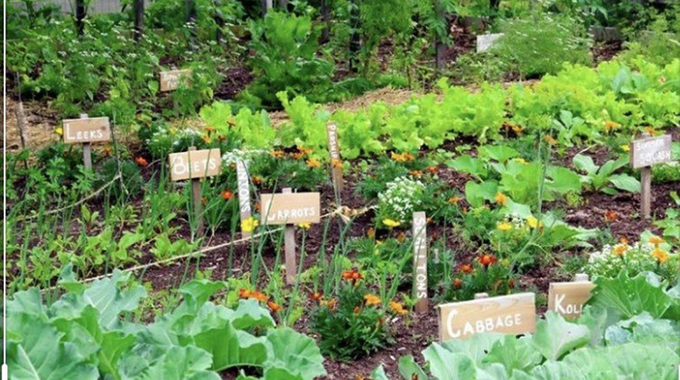Magic of inheriting, tending a garden

Talent Gore Home and Garden Writer
Inheriting a family garden is a wonderful thing, but it can also be inhibiting, as Samantha Pierce found out in 2013 when she moved to the house that had belonged to her grandparents in Glendale, Harare. With so many nostalgic memories of the garden from her childhood, she has found it difficult to make her own changes.
“It was like a children’s paradise,” she remembers. “Since moving here, I have struggled with what to do with the garden, wanting it to stay the same, almost worshipping the way it used to be.
“But now I’ve reached the point where I can start again, and I’m making plans.”
The two-acre walled garden is, indeed, a children’s paradise, with old glasshouses, trees to climb, a fast-flowing stream and an overgrown secret garden.
With help from her gardeners; husband-and-wife team, Samantha grows salvias from cuttings, mostly in pots that can be moved inside when the weather gets cooler.
Samantha’s grandparents bought the house just after independence in 1980, and made the walled garden their own, opening it regularly to nature lovers.
Her grandmother and later her father were expert vegetable gardeners, while her grandfather tended the peach espaliers.
Her grandmother was also interested in wild flowers.
Samantha spent school holidays running wild in this garden or going on “extreme walks in unsuitable shoes” with her father, a passionate lover of the outdoors.
During this formative time, Samantha developed a lasting affinity with nature, discovering that she had an almost photographic memory for the plants, colours and forms of the natural landscape.
“In all my work I try to recreate an atmosphere or the sense of magic that you find in nature,” she said. “Sometimes I use plant combinations you actually find in the wild, or experiment with similar plant shapes or forms. Other times it might be just the shape of the land or the way a stone wall snakes down a hill that inspires me.”
Now expecting her second child, she is designing gardens part-time, and enjoying being out of the limelight for a while, giving herself time to bring her grandparents’ garden back to life and putting her own stamp on it.
“I have a completely different pace of life here, which I’m finding is opening up my imagination,” Samantha said. “There are flowers, herbs, fruit and vegetables. It’s where everything happens. We play here in the garden, it gives us so much joy just to come and enjoy the day in the garden.”
In the kitchen garden, she is restoring the old glasshouses and the gravel paths with their stone edging, she plans a mixture of vegetables.
“I want my garden to be productive and practical, but romantic and beautiful at the same time,” she added.
“It has to be a real garden, expressive of us as a family, where Jack can guerilla-plant vegetables among my flowers and Lewin can run around.
“If a garden feels as if it’s always been there, you’ve got it right. If you feel comfortable in it, you have got the proportions right and if the children start running about in it, that’s even better.
“There’s joy to it then. Those are the best litmus tests I know for a successful garden, and if you get it wrong, you know instantly it jars.”
Samantha plans to link the different garden areas with what she calls “theme species”: structural, easy-to-grow plants that can be repeat planted in generous drifts throughout the garden to give a sense of connectivity.
Turning away from the traditional concept of organised borders, she envisages instead a kind of “graded meadow”, with low-growing alpines, wild flowers and taller perennials all blending together in a painterly sweep of colour and texture.
For the moment, she is growing lots of plants from seed, looking forward to trying new, exciting plants and combinations and looking closely at how they grow, from seedling to seed head.
“Growing plants from seed is like experimentation, isn’t it? It’s just so satisfying. I’m just looking forward to really observing how they grow, how they flower, how they die back,” Samantha said.
“Next year, I’ll try something different. The magic is in the garden being transient. I never want it to stay still.”
She said gardening was her passion.
“I’m creatively inspired by what I grow in my garden and what’s grown here as well. The herbs inspire my young team too, most of them have been brought up in an urban environment,” she said.
“We found the clary sage the other day, and tried it wrapped round a piece of ling, like a saltimbocca. Amazing. I know the fish side, but I’m really excited by vegetables and herbs.”










Comments